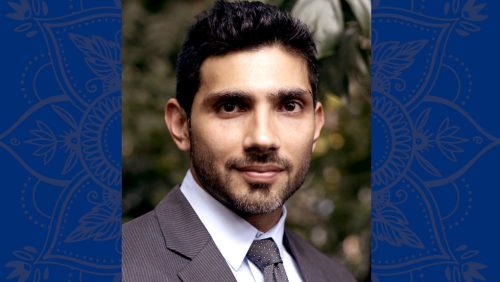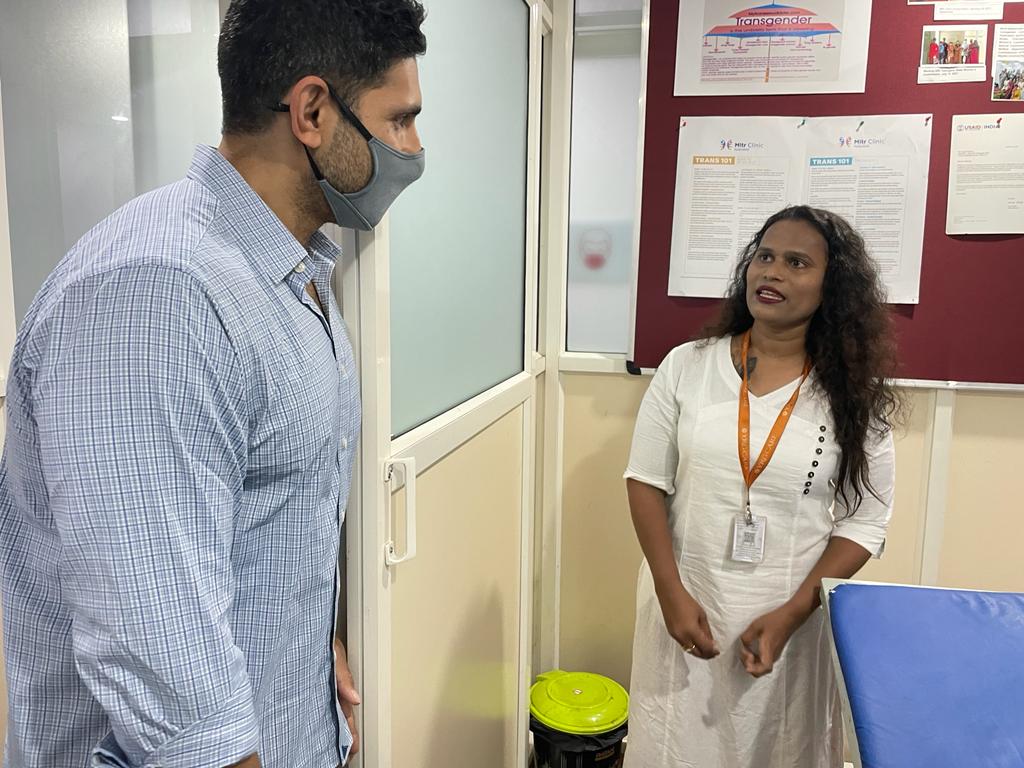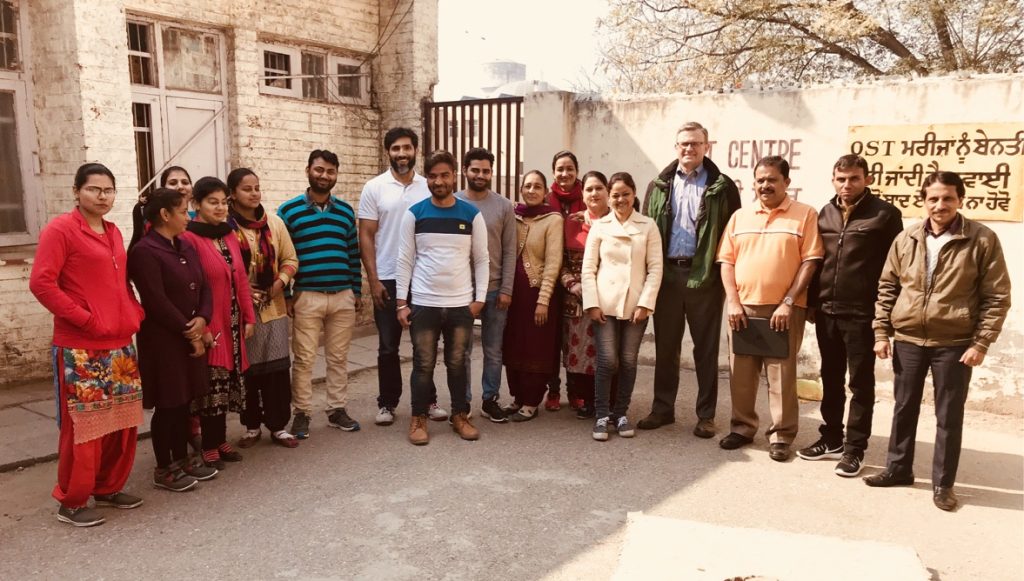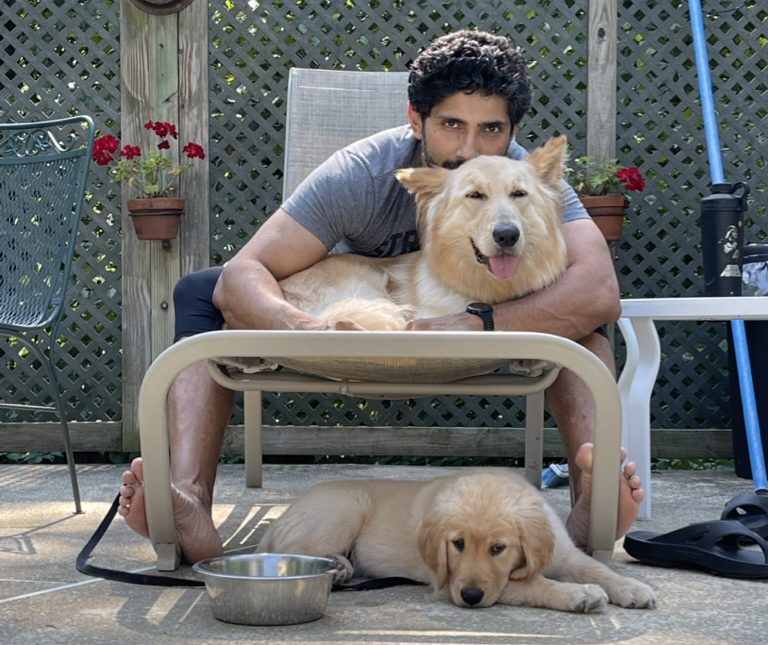
Sunil Solomon Faculty Spotlight
Written by Colter Billings
“It’s not about the publications or anything else, it’s about making a difference in the lives of people walking through your doors.”
Sunil Solomon didn’t always intend to be a doctor. Throughout high school he aspired to being a pilot, or maybe a racecar driver. Having doctors for parents, however, changed his mindset. While they sat around the dining table discussing work, he was listening and watching, developing his own ethos.
He intended to follow in his father’s footsteps and become a surgeon when he finished medical school, but his father gave him some advice. “He told me that surgery is way too late, It’s too downstream. If you really want to have an impact at the population level, help prevent people from needing the surgery,” Sunil recounted his father explaining to him. “If 100 people have cardiovascular disease, maybe one person can afford the procedure. But if you could treat them early and catch the hypertension and the diabetes or cholesterol earlier on, you might prevent 80 of them from needing cardiovascular surgery.”

Taking this to heart, Sunil switched his focus to epidemiology and HIV, the field his mother was working in. If he was going to have the greatest impact though, he wanted to work with the most vulnerable communities in India: sex workers, men who have sex with men (MSM), the transgender community, and people who inject drugs (PWID).
“I feel that’s the population we really need to help. If you want to help people who are already being helped by several others, what are we really adding on?. If you really believe you want to end HIV as a public health threat by 2030 or eliminate hepatitis C, we’re never going to get there unless we actually focus on the vulnerable populations,” he said. “They’re hard to work with given the structural and societal challenges, that deters many people, but I find that as a challenge. Let’s see how we can actually work with them and build programs that give them more ownership of the model.”
“One Size Doesn’t Fit All”
For Sunil, one of the biggest challenges to this approach is how large and how diverse India is. “People think of India as one country, but India is multiple, small countries. The cultures are different, the languages are different, and the time zones are different– India lives in multiple eras at the same time. What works for the MSM community in Delhi is not going to work in rural Andhra Pradesh,” he said. “Their societies are different, so it really is the whole idea of how we adapt programs and culturally tailor them to specific communities and the state. It’s the most challenging part about working in India, but it’s also the most interesting part.”
The goal is to take what he’s learned here and make it global. Once a template is created that works in diverse India, he explained that you can take it nearly anywhere in the world, especially for PWID. “If you go to the northeastern states of India, they’re advanced with respect to access to HIV services. They have access to harm reduction services, they’re all on antiretroviral therapy and their challenge is hepatitis C treatment. They’ve done a phenomenal job with their harm reduction and HIV services,” he said. “If you go to the heart of India, in Delhi or Kanpur, they are still looking for access to harm reduction services and ART. It’s harder to deal with PWID in New Delhi vs. Manipur.”
Integrated Care is Key
Because the most at-risk communities were the hardest to help, he asked them directly what they needed and what outcomes they wanted. For his work with the Mitr Clinic, they started off with community consultations with the transgender population in Hyderabad to collect a list of services.

“We always think of things from a very disease-centric angle. When building an HIV clinic for the transgender community, you’re probably thinking HIV testing is the most important service there. But then when you start talking to the communities, they say, ‘we don’t care about HIV testing, we care about hormone replacement therapy, we care about access to social support schemes. Someone needs to fill out all those forms for us online, because we have no access to that,’” he explained. “So, we needed to flip our models to make those the key services that bring people into the clinic, and when they’re in those clinics, we offer them all the other health related services. ‘You’re already here for your hormone replacement therapy consultation, why don’t you get screened for HIV or hepatitis?’ Every time I go to these clinics, I learn something new. It’s a constantly evolving process.”
The integrated care model approach has worked extremely well in Imphal, Manipur. In Imphal, PWID achieved 90-90-90 by 2017, three years ahead of the 2020 target. Sunil credits the communities for their success.
“They’re empowered there. Drug use is more common, and less stigmatized, compared to a place like Kanpur,” he said. “We set up the same integrated care center there, but the program didn’t work as well. We didn’t have anything to draw people into the program, because there wasn’t access to harm reduction services.”
Virtual technology is the future of Healthcare
With an eye on preventive care and downstream effects, Sunil anticipates technology, apps, and the virtual space becoming an integral part of healthcare. In a place as large as India, distance between clinics and communities is a logistical issue. Different facets of healthcare being in different places is another. He explained that setting up a clinic limits assistance to the people in that geographical area.
“The way things are set up, you go somewhere for your methadone or buprenorphine and go somewhere else for service programs, and go somewhere else for HIV testing, and somewhere else for the treatment. No one want to go to multiple places,” he said. “We’re moving more and more to the generation where we open our phone, hit Uber Eats, and they bring food to me. We tried to bring all these services into one venue: one-stop-shop, integrated care centers.”
With a grant from PEPFAR and NACO, his team was among the first to launch HIV self-testing in India in the private sector through an online platform. It is set up so users can self-select the services they need, from STI screenings to PreP access. He hopes to have it become a completely virtual, remote-access clinic by early 2023.
He also has launched a virtual outreach worker center, where young, digital native, outreach workers talk to clients, offer them services, bring them into the website. Everything is facilitated through WhatsApp, all the way through talking to a doctor online.
Measuring Success
Sunil’s work has, so far, provided services to over 200,000 people in India, and has changed standards of practice for thousands more.

“I don’t know how people measure success, but to me, if you made a difference by providing access to harm reduction or HIV testing or treatment to even one person, I feel that really is success. The most important thing is what my parents taught me. It’s not about the publications or anything else, it’s about making a difference in the lives of people walking through your doors,” he said. “You can’t help everybody in the world, but you can make a difference for the ones who walk into your clinic or walk into your virtual platform. That’s pretty much been my driving principle throughout, and I will continue to do that as we go forward.”